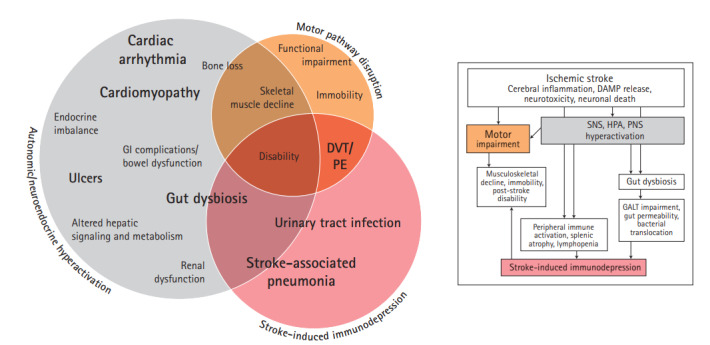Figure 3.

The pathophysiological sequelae of ischemic stroke. The impact of ischemic stroke reaches systemic proportions through evolution of three main pathophysiologies: stroke-induced immunodepression, autonomic and neuroendocrine dysfunction, and motor pathway disruption (flow chart). Each pathophysiology then facilitates development of the detrimental clinical complications observed beyond the stroke-affected brain (Venn diagram). Though much overlap exists between influential pathophysiologies and the ensuing complications, this figure presents a simplified overview of how the pathophysiological sequelae of ischemic stroke culminates in a vast array of clinical complications. GI, gastrointestinal; DVT, deep vein thrombosis; PE, pulmonary embolism; DAMP, damage-associated molecular pattern; SNS, sympathetic nervous system; HPA, hypothalamic pituitary adrenal axis; PNS, parasympathetic nervous system; GALT, gut-associated lymphoid tissue.
